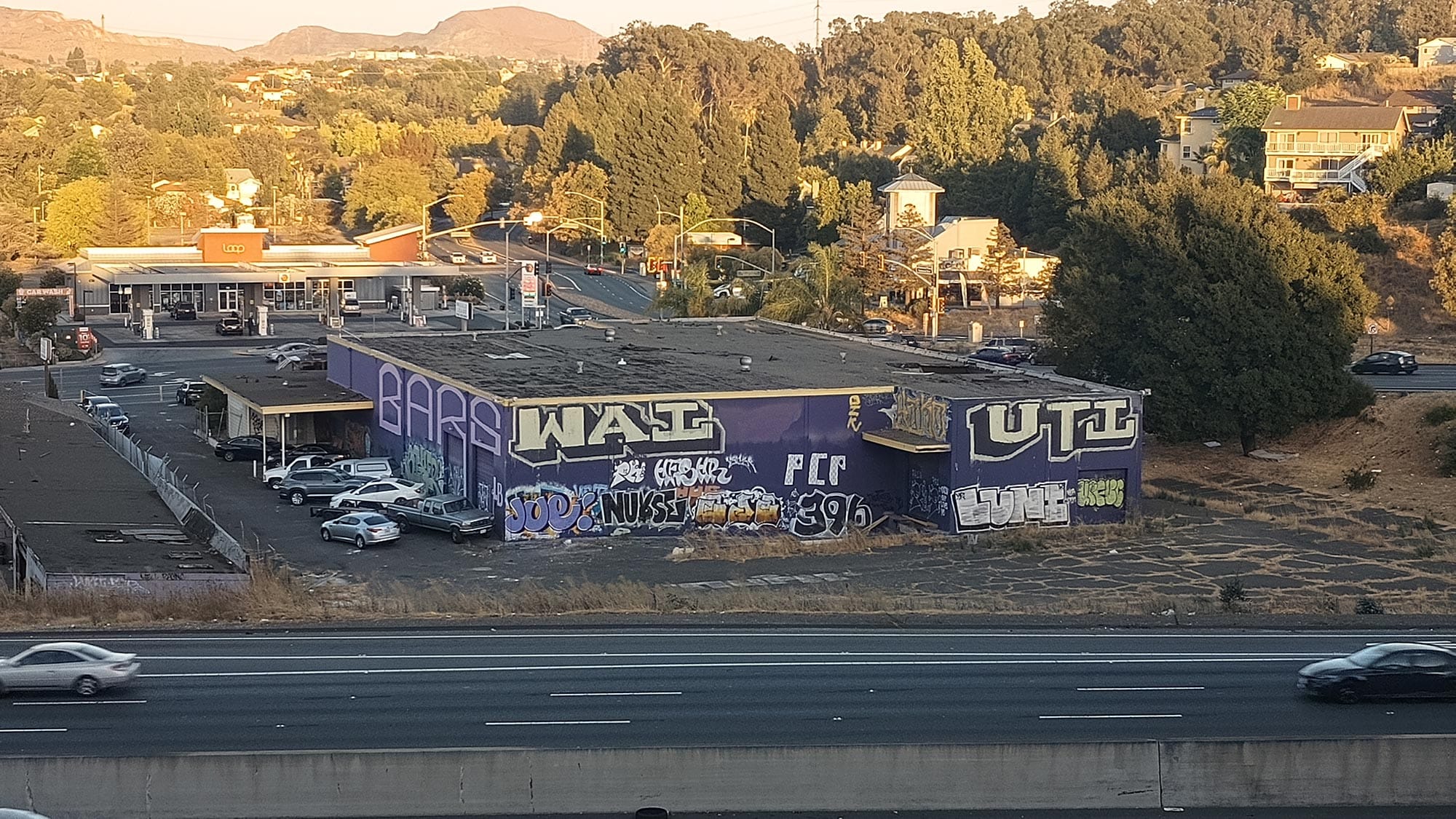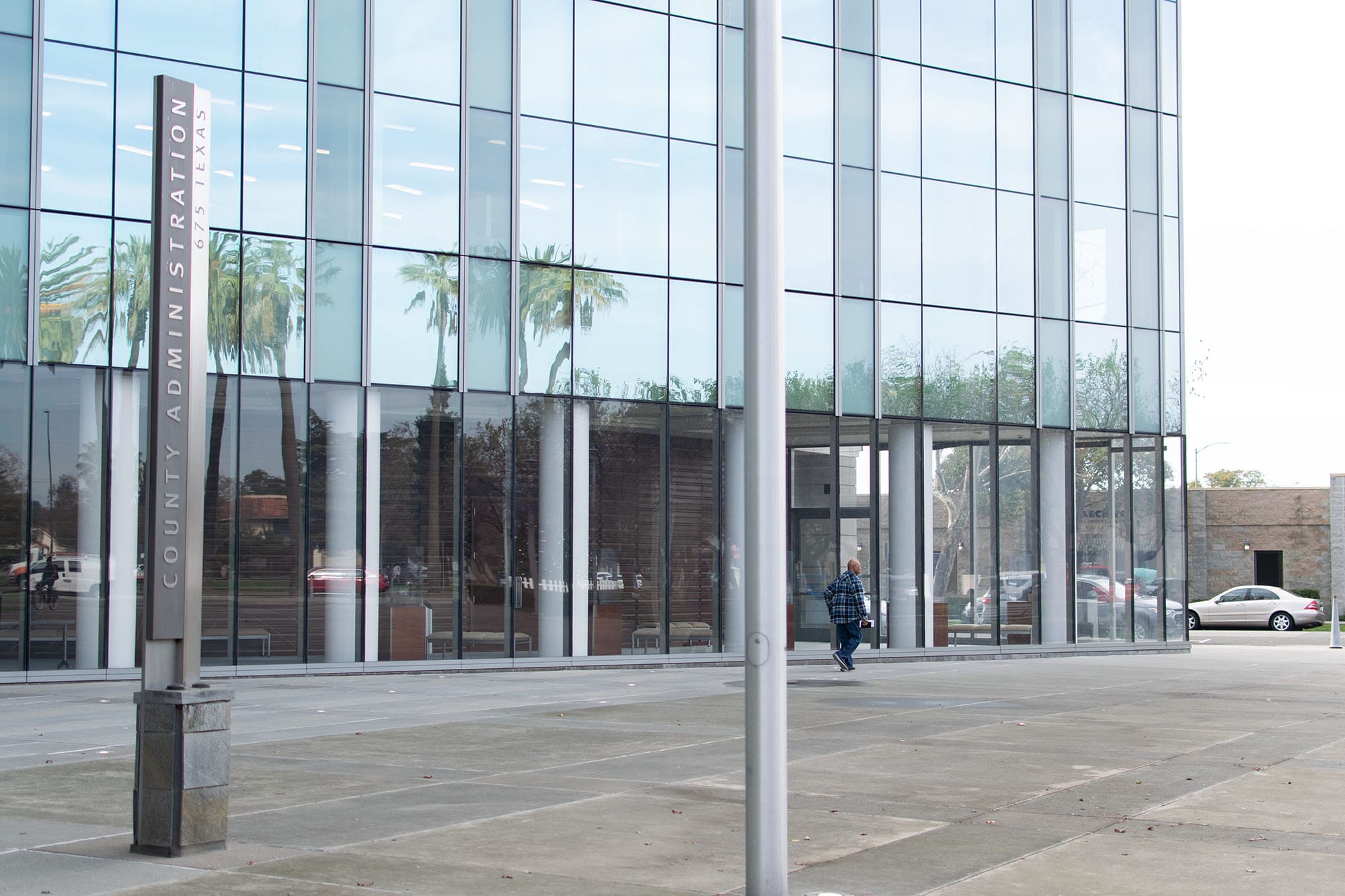VALLEJO – A new business, event center or development is often announced to be coming to Vallejo to fanfare in the local news lauding it as a step forward in the city’s economic development. Yet residents drive by the empty facades – including historical landmarks – for years or decades, scratching their heads and wondering why the buildings remain vacant.
They include an empty department store, offices, a shuttered federal building, a former veterans hall, the Elks Lodge, and a furniture store.
Some have development plans that have either stalled or been abandoned. Others, like a former Raley’s grocery store in the Park Place Shopping center that closed in 2017, aren’t listed either for sale or lease.
According to Harvard University’s Joint Center for Housing studies, the primary reason that urban storefronts remain empty for lengthy periods is that “landlords are willing to forgo rents today in order to preserve the option to lease their space to someone else (who might pay higher rents) tomorrow.”
Elizabeth Pidgeon, a historical architect and former president of the Vallejo Architectural Heritage Foundation who has been on the boards of both Benicia Main Street and Vallejo Main Street, said that the problem with vacant storefronts that are owned by people who are waiting for the market to go up to sell, is that they are the market.
“You are holding everybody else back because of your big empty storefronts,” she said.
But the reasons that Vallejo buildings are vacant can be as varied as the buildings themselves. Some were damaged in the 2014 Napa earthquake, other well-meaning entrepreneurs have run into difficult zoning issues, and some require costly renovations.
And a high rate of vacancies can make it more difficult to get a new business off the ground, as it’s easier to succeed in a neighborhood that already has a thriving economy.
Downtown Vallejo
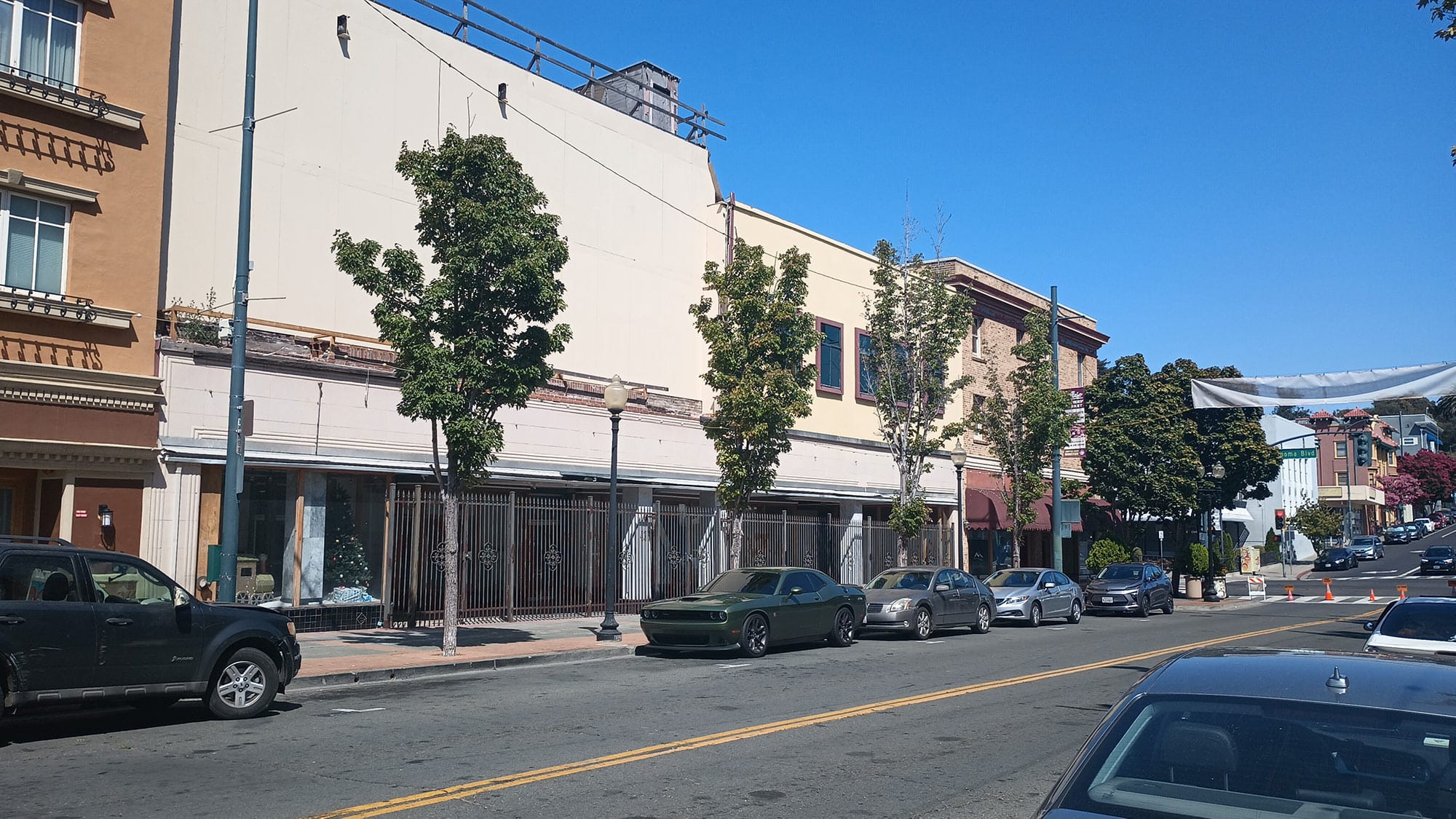
The old Crowly’s department store at 436 and 438 Georgia St. is a familiar eyesore to everyone familiar with Vallejo’s downtown. It was used primarily to store furniture during the years preceding the 2014 Napa earthquake, which caused serious damage to the building and required the removal of the fourth floor and the brick walls from the remaining upper floors.
An ambitious remodel of the building was approved in 2015, with a storefront on the ground floor, apartments above, a penthouse apartment and roof garden, and new windows that would better match the historic aspect of neighboring buildings. But the project application expired in 2018, and no progress has been made except for upgrades from blue plastic tarps to scaffolding and netting to windowless siding over the demolished upper-story walls.
Meanwhile, the building’s owner – Evergreen Cemetery Association, which is controlled by businessman Buck Kamphausen – has been ensnared in a lengthy legal battle with the state Department of Justice, which is attempting to seize the building along with other assets because of what it characterized as “severe mismanagement.”
Across the street from the old Crowley’s building and one block west toward the water, a six-story neoclassical building sits empty with boarded up windows. The building at 325 - 329 Georgia St. was occupied for 30 years by Payless Furniture until 2011. It then briefly housed the Solano AIDS Coalition thrift store and 5 Ric’s New and Used Furniture before it went dark.
The last building permit application for that address was submitted in 2021 and sought to convert offices into 16 residential apartments, but it’s since expired. The building is currently subject to an open citation for having boarded up windows and deteriorated paint and graffiti under the city’s Vacant Real Property code, which requires property owners to maintain such properties so they do not become a blighting influence.
Federal Building
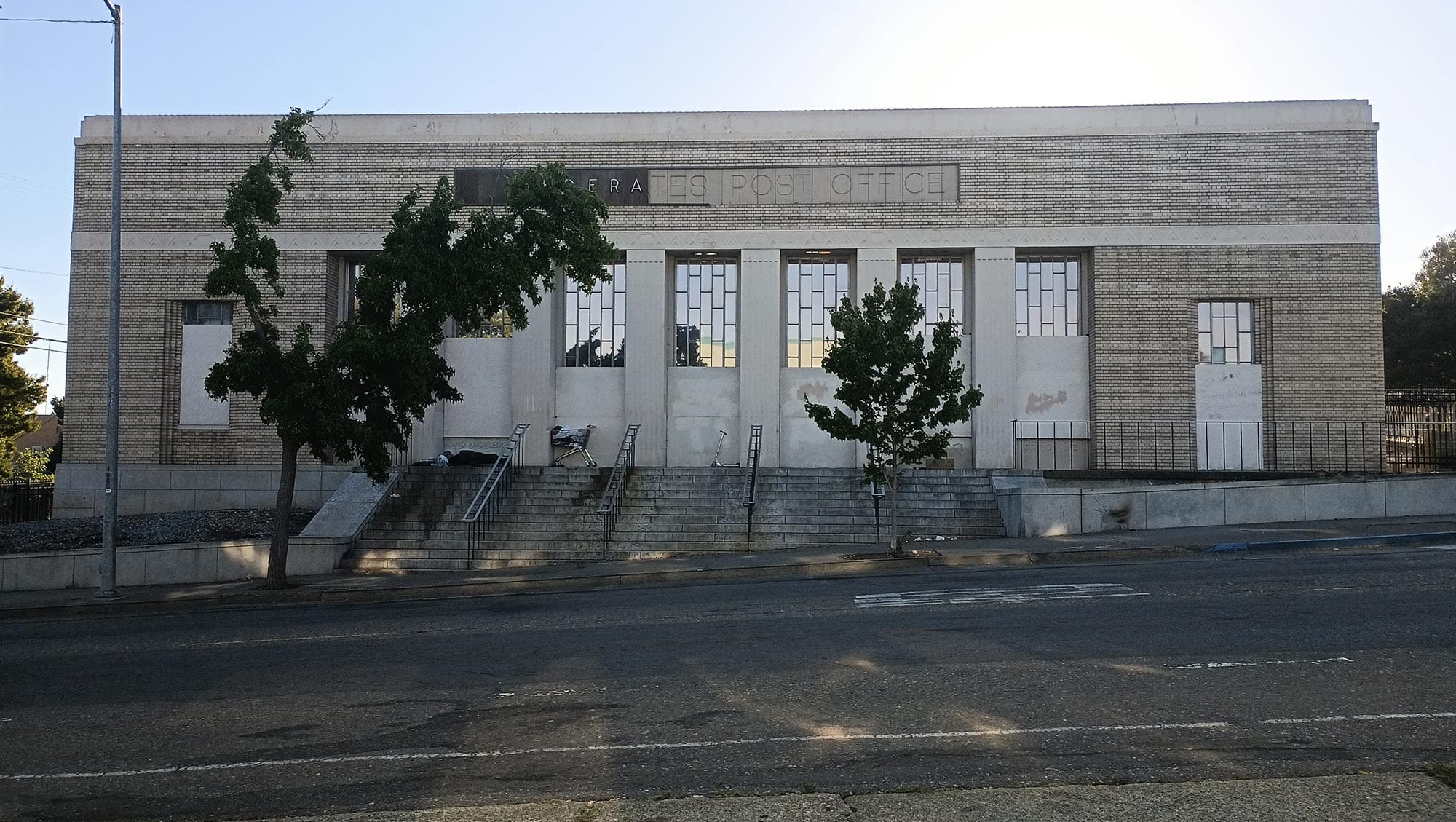
A couple of blocks north of downtown on Marin Street is the former U.S. Post Office and Federal Building, a large Beaux-Arts structure with a brick facade, 20-foot ceilings and granite floors.
The building made the U.S. government’s list of Vacant and Underutilized Real Properties in 2003, and was sold to the Vallejo Music Theatre, which staged plays there until it lost the building to foreclosure in 2011.
It’s remained vacant since, in part because modern code requirements applied to older buildings can be prohibitively expensive or physically impossible to meet.
Elin Delgadillo and other members of his family acquired the building in 2018 with the goal of opening it as a center for private events such as weddings, quinceañeras, and family reunions. But they have encountered a series of unexpected obstacles.
After the Delgadillos held a couple of private family events there in 2019, someone complained to the city.
“That kind of put a target on our back,” Delgadillo said. “It was our building so we assumed we could do it.” The property was flagged by the city in 2019 and the family stopped all activity while they try to get it into compliance.
Delgadillo said the city planning department’s requirements are a moving target due to high staff turnover. “We'll complete one list, and then by the time we're finished and complete to submit our proposal, there's a new planner who's got a new set of requirements,” he said.
The biggest obstacle facing the Delgadillos now is the city’s parking space requirement. The main assembly room is over 7,000 square feet, which according to the planning department, requires 120 parking spaces to accommodate the average maximum attendance of 220 guests. The building has only 28 parking spaces. That problem could be solved simply if nearby parking was available, but Delgadillo said the owner of the funeral home across the street is unwilling to rent his parking lot for their events.
The Delgadillos’ 2020 business plan proposed a shuttle service to nearby parking lots as a solution to the parking requirement, but the planning department wouldn’t budge. “They were very strict, by the book,” Delgadillo said. “But with these older historic properties, you can't really do much. You can't tear the building down.”
Delgadillo now plans to apply for a variance to the city code’s parking requirement, which he said he didn’t know was an option until recently. “We’re in the final phase,” he said. He said he hopes to have everything approved by this year.
Pidgeon described the city’s parking requirements as a flawed, outdated 20th Century concept that historic downtowns struggle with. “Look at the uses in San Francisco, where there's no parking,” she said. “That just means somebody needs to be able to either walk a couple blocks from somewhere else or take an Uber.”
In the meantime, the Delgadillos have had to board up the windows to prevent break-ins. Delgadillo said an unhoused man who is adamant that he is a former federal agent who owns the building, camps out on the steps, defecates and sells drugs there. He said he routinely calls the police on the man.
“They'll take him, book him, and he'll come right back like the following day,” he said.
Veterans Memorial Building
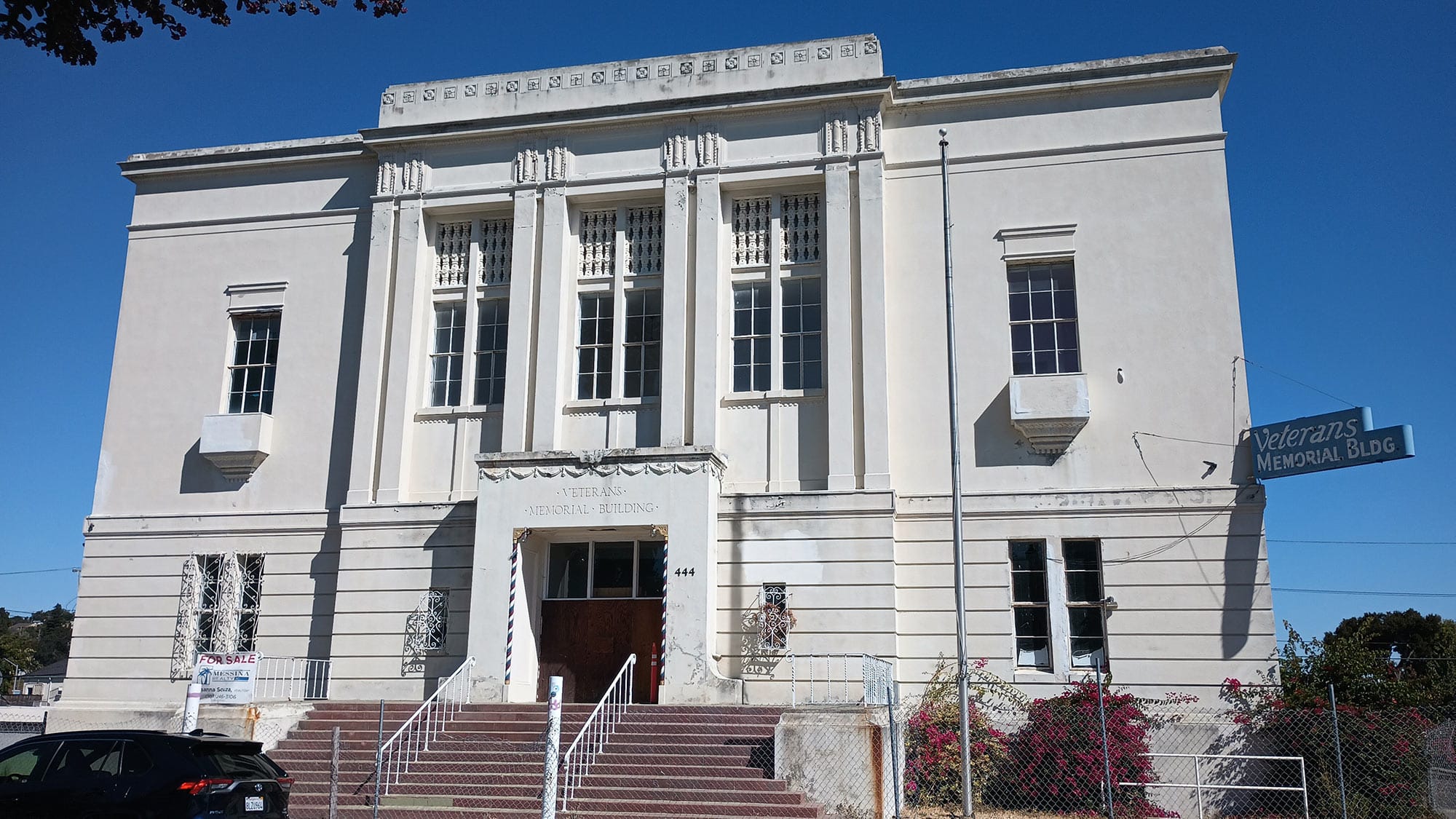
Stroll up Marin Street a few blocks north past City Park and you’ll see the stately Veterans Memorial Hall at 444 Alabama St. that has been closed since 2005.
The historic landmark was once a vibrant concert hall, with shows by Ella Fitzgerald, Fats Waller, Jimmy Dorsey, Little Richard, James Brown, and Ike and Tina Turner. The Kingston Trio played there for the 1958 Vallejo Senior Prom. The building also hosted meeting space for groups like the American Legion, Veterans of Foreign Wars and the Vallejo Numismatic Society.
The building was owned by Solano County but was allowed to fall into disrepair. The leaking roof, rotted floors, and asbestos concerns caused the closure of the upper two floors, and by 1991, only the basement was considered safe for use. The veterans sued the county for lack up upkeep to the building, and county settled the lawsuit by purchasing 420 Admiral Callaghan Lane for the veterans’ use in 2005,
A partnership between the Vallejo Architectural Heritage Foundation and the county to restore and reopen the building fell apart when the county backed out and put the building up for sale in 2013.
Pidgeon, a member of the Vallejo Architectural Heritage Foundation at the time, said the foundation was considering purchasing the building and paid for an extensive structural evaluation.
They found that the city’s estimates for the cost of restoration and an earthquake retrofit were much higher than what was actually required. Pidegon said the city estimated it would cost around $2.5 million for a seismic retrofit, which she said was based on assumptions and lack of information. The actual cost based on the 2009 structural evaluation was $1.5 million.
The engineering firm analyzed samples of the building's steel reinforcement and inspected the welded connections, and concluded that it needed only minor seismic reinforcement work, hazardous materials abatement, general repairs, and the addition of an elevator for Americans with Disabilities Act compliance to be serviceable once again.
The building was purchased in 2013 by Ed Boydston, who died in 2018, and then by Gene Campbell, founder of Epic Venues, which runs the Corinthian Grand Ballroom and The GlassHouse event centers in San Jose.
Campbell had plans to restore the building for use as a private event center, with artist studios and office space in the basement and former meeting, but they abandoned those plans and put the building up for sale in 2023.
The site is likely subject to the same problem of limited parking spaces that owners of the Federal Building face. Pidgeon said that the city could help offset that by converting nearby street parking to diagonal, which would triple the street’s parking capacity.
Elks Lodge/Carlton Senior Living
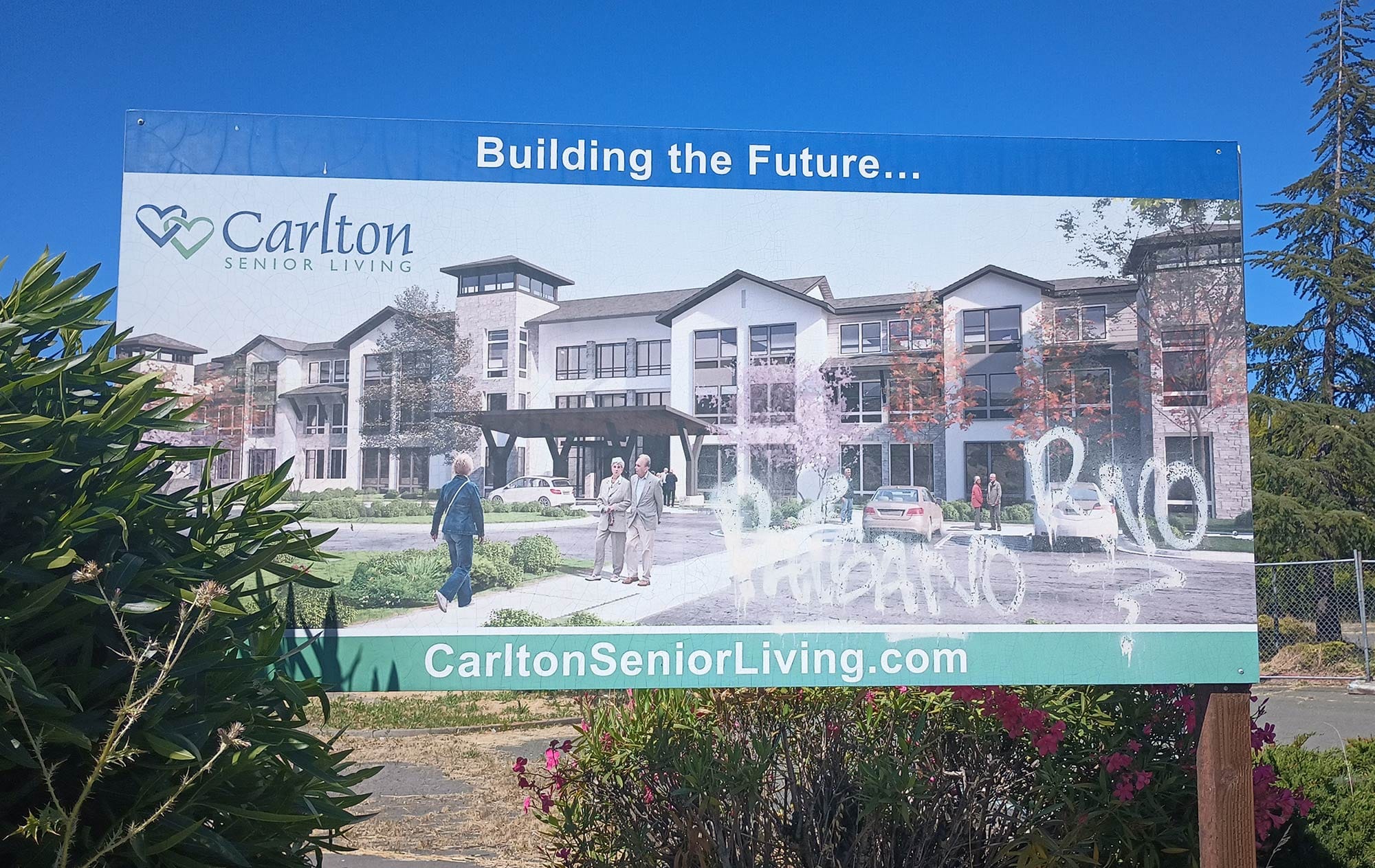
A billboard showing attractive condos with the words “Building the Future” stands in front of the former Elks Lodge on Redwood Street in the upscale neighborhood east of Admiral Callaghan Lane. But that future may be a long way away.
The site of the former Elks Lodge, which closed in 2014, was purchased by Carlton Senior Living in 2017, which operates 12 assisted living facilities in Northern California from Sacramento to San Jose.
Carlton Senior Living said it would build a three-story, 154,000-square-foot assisted living facility. It was slated to include 120 assisted living units, 36 memory care units and up to 24,000 square feet of medical office or commercial retail space.
General manager Tim MacDonald expressed enthusiasm for the project when it was featured in the Vallejo Times- Herald in 2018, saying that the company had wanted to open a senior community in Vallejo for quite some time.
Company President Dave Coluzzi told the Times-Herald that the project’s proximity to retail and medical facilities was ideal, and said that an aging demographic will guarantee a need for senior living facilities well into the future.
But a city of Vallejo spokesperson said that the city’s approval for the project expired in 2021. “The applicant never submitted building plans.”
When the Vallejo Sun reached out to Carlton Senior Living management about the current status of the project, MacDonald said, “This project is on hold for the time being.” He did not provide an explanation about why the project has stalled.
Quality Furniture
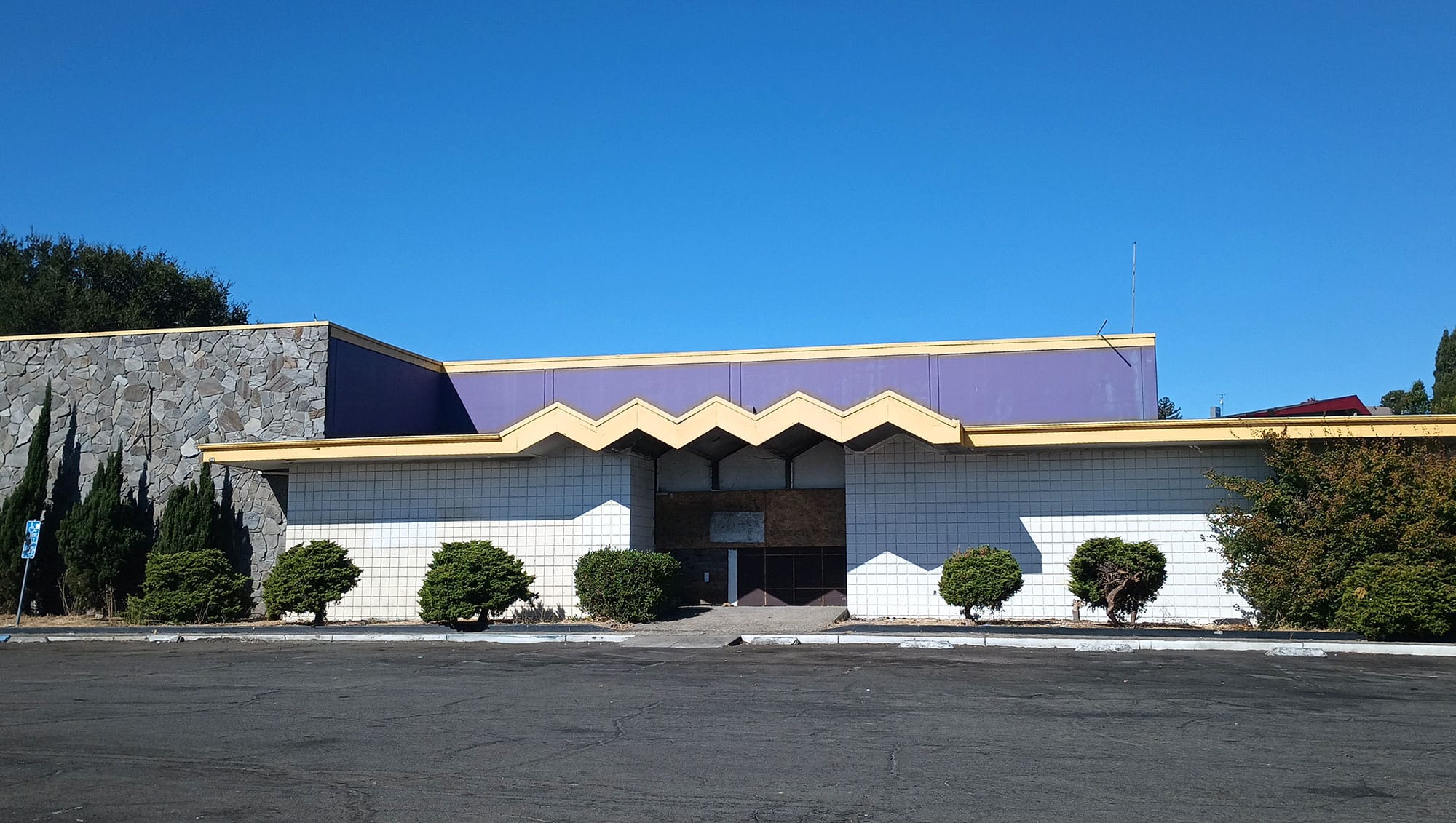
Around the corner from the Elks Lodge is another long-vacant property, last occupied by a furniture store that closed many years ago.
The front of the property is part stone and tile facade, with highlights painted bright purple offset with a yellow zig-zag faux roofline. It appears to be well maintained from the front, but the rear of the building, visible from Interstate 80, is heavily tagged.
Between 2018 and 2020, prospective developers inquired with the city planning department to use the property for a gas station and drive through, a self-storage business, a cannabis business and a used car dealership, but none of those projects moved forward.
Developer Hadar Weitzman told the Vallejo Sun that the property is only being offered as a package with the smaller building next door, another long-vacant building that used to house a ski rental business. He said he’s not interested in granting short-term leases because he doesn’t want to tie up the properties for a year waiting for permits.
He said that he expects interest in the property to increase after the Fairview at Northgate project, about a half-mile to the north, is complete. That project involves building a new, larger Costco warehouse and a 178-unit residential neighborhood, and is expected to be completed in 2026.
Weitzman said he’s willing to wait. “it’s not going to stay like this,” he said. “It’s going to be developed.”
He said the property, which used to house a CHP substation, is well suited to be a food market, a combination car wash and gas station or medical facility.
What can be done?
Pidgeon said that Benicia Main Street, in partnership with the city, the Benicia Chamber of Commerce and other businesses organizations, helped turn Benicia around by convincing property owners to offer short-term leases instead of waiting for the perfect five-year lease that's never going to happen.
Benicia suffered an economic downturn after their army base closed in 1964, about 30 years before Vallejo lost the Mare Island Shipyard. Pidgeon said that about 45% of Benicia’s downtown storefronts were vacant when the city applied to participate in the Main Street program in 1986.
Pidgeon said that Benicia Main Street paid for an independent consultant to talk to business and property owners about how businesses hurt each other with vacant storefronts and irregular business hours, and what it takes to get past that.
Benicia’s downtown is now bustling, in sharp contrast to Vallejo.
Another problem that Pidgeon said needs to be overcome is the concept of a downtown primarily as a retail space. With retail sales shifting to the internet, and malls closing around the country, that is no longer the case. Pidgeon said that downtowns are better thought of as a community living room.
“The reality is that downtowns are more suited for restaurants, the kind of businesses people come and go, and then go buy a cup of coffee and hang out for a while, and we have everything physically needed to make that work,” Pidgeon said. “A lot of our businesses are closing at three o'clock, four o'clock. When they can afford to stay open through dinner, that's when we will have arrived, because then we'll have a full use downtown.”
Pidgeon also said that mixed-use districts that blend residential, office, retail, dining and entertainment are ideal. Office workers help support the restaurants, and the eyes and ears of residents help improve security throughout the night.
Pidgeon said she thinks the city could do a better job of informing property owners about financial incentives from the Historic Tax Credit and American Recovery and Reinvestment Act that can greatly reduce development costs. “Nobody at the city is distributing that information,” she said.
Pidgeon said the city is at a tipping point, and that it is frustrating that the partnership between property owners and the city is stalled. “I think it's stalled in part because of high turnover of staff, and there's a lot of factors,” she said, “but I think we all need to work a little harder on it.”
Before you go...
It’s expensive to produce the kind of high-quality journalism we do at the Vallejo Sun. And we rely on reader support so we can keep publishing.
If you enjoy our regular beat reporting, in-depth investigations, and deep-dive podcast episodes, chip in so we can keep doing this work and bringing you the journalism you rely on.
Click here to become a sustaining member of our newsroom.
THE VALLEJO SUN NEWSLETTER
Investigative reporting, regular updates, events and more
- business
- government
- arts
- Vallejo
- Benicia
- Elizabeth Pidgeon
- Vallejo Main Street
- Vallejo Architectural Heritage Foundation
- Benicia Main Street
- Buck Kamphausen
- Vallejo Music Theatre
- Elin Delgadillo
- Gene Campbell
- Epic Venues
- Carlton Senior Living
- Tim MacDonald
- Dave Coluzzi
- Hadar Weitzman

Gretchen Zimmermann
Gretchen Zimmermann founded the Vallejo Arts & Entertainment website, joined the Vallejo Sun to cover event listings and arts and culture, and has since expanded into investigative reporting.
follow me :

